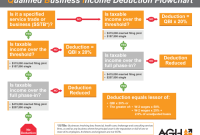Common business loan application mistakes to avoid and ensure smooth approval – Applying for a business loan can be a daunting task, but it doesn’t have to be. By avoiding common mistakes, you can increase your chances of getting approved for the financing you need to grow your business. Here are 11 common business loan application mistakes to avoid:
1. Incomplete or inaccurate information
2. Lack of preparation
3. Insufficient documentation
4. Unfavorable credit history
5. Inaccurate financial information
6. Unrealistic loan request
7. Lack of business plan
8. Poor presentation
9. Lack of collateral
10. Weak business case
11. Incomplete application
Unfavorable Credit History
Maintaining a strong credit history is crucial for securing business loans. Lenders evaluate your credit score to assess your creditworthiness and repayment history. A poor credit history can significantly hinder your loan approval chances.
To ensure a smooth business loan application process, it’s crucial to avoid common mistakes. One such mistake is overlooking the impact of your debt-to-equity ratio on loan eligibility. Understanding this relationship is essential, as discussed in Unveiling the Nexus between Debt-to-Equity Ratio and Loan Eligibility: A Comprehensive Analysis.
By addressing these aspects, you can increase your chances of loan approval and avoid potential pitfalls.
If you have an unfavorable credit history, taking steps to improve your score is essential. Consider the following strategies:
Dispute Errors
Review your credit report for any inaccuracies or errors. If you find any, dispute them with the credit bureaus to have them corrected.
Pay Bills on Time
Making timely payments on all your financial obligations is crucial. Payment history accounts for a significant portion of your credit score.
Reduce Debt
Lowering your debt-to-income ratio improves your creditworthiness. Focus on paying down high-interest debts first.
Limit New Credit Inquiries
Applying for multiple loans or credit cards in a short period can negatively impact your score. Only apply for credit when necessary.
Build Positive Credit
Obtain a secured credit card or become an authorized user on someone else’s account with a good payment history to establish positive credit.
To avoid common business loan application mistakes and ensure smooth approval, it’s crucial to understand the nuances of different loan types. Navigating the Maze: Line of Credit vs. Term Loan provides valuable insights into these options, helping you make informed decisions.
By addressing these common pitfalls and exploring the right loan type for your business, you can increase your chances of securing funding and driving growth.
Inaccurate Financial Information: Common Business Loan Application Mistakes To Avoid And Ensure Smooth Approval

When applying for a business loan, it’s crucial to provide accurate and up-to-date financial information. Misleading or false information can jeopardize your chances of approval and may even lead to legal repercussions.
Avoiding common business loan application mistakes is crucial for smooth approval. For instance, failing to provide complete financial statements or underestimating the amount of funding needed can delay or even deny your application. If you encounter challenges securing traditional financing, Unveiling Funding Avenues: Alternative Financing Options for Businesses with Unique Needs provides insights into exploring alternative financing solutions.
However, meticulous preparation and attention to detail remain essential to increase your chances of securing funding and ensuring a successful loan application process.
Lenders rely on your financial data to assess your creditworthiness, ability to repay the loan, and overall financial health. Providing inaccurate information can result in an incorrect evaluation of your financial situation, potentially leading to:
Denied Loan
- Loan denial: If your financial information doesn’t accurately reflect your financial situation, the lender may conclude that you’re not a suitable candidate for the loan and decline your application.
Higher Interest Rates
- Higher interest rates: If your financial information presents a less favorable picture than your actual financial situation, the lender may perceive you as a higher risk and charge higher interest rates on the loan.
Legal Consequences
- Legal consequences: Intentionally providing false or misleading financial information on a loan application can constitute fraud, which can have serious legal implications, including fines and even imprisonment.
To avoid these consequences and increase your chances of loan approval, it’s imperative to be honest and transparent about your financial situation. Provide accurate and complete information on your application, including your income, expenses, assets, and liabilities.
Unrealistic Loan Request
Requesting an appropriate loan amount is crucial to ensure smooth loan approval. Overestimating your repayment capacity can lead to financial distress and loan rejection.
To determine the right loan amount, consider the following:
Income and Expenses, Common business loan application mistakes to avoid and ensure smooth approval
- Assess your income from all sources, including salary, investments, and any additional income.
- Calculate your essential expenses, such as housing, food, transportation, and healthcare.
- Subtract your expenses from your income to determine your disposable income.
Debt Obligations
- List all existing debts, including credit cards, personal loans, and mortgages.
- Calculate the total monthly debt payments.
- Ensure that the proposed loan payment, combined with your existing debt obligations, does not exceed 36% of your gross monthly income.
Debt-to-Income Ratio
Lenders typically prefer borrowers with a debt-to-income ratio (DTI) of 36% or less. DTI is calculated by dividing your total monthly debt payments by your gross monthly income.
A higher DTI indicates a higher risk of default, which can lead to loan rejection or higher interest rates.
Lack of Business Plan
A comprehensive business plan is indispensable when applying for a loan. It serves as a roadmap for your business, outlining your goals, strategies, and financial projections. Lenders rely on this document to assess the viability of your business and determine the likelihood of repayment.
To create a compelling business plan, consider the following steps:
Executive Summary
- Summarize your business concept, mission, and goals.
- Highlight key financial projections and market analysis.
Market Analysis
- Identify your target market, competition, and industry trends.
- Provide data and research to support your analysis.
Operations Plan
- Describe your business operations, including production, sales, and marketing.
- Artikel your management team and organizational structure.
Financial Plan
- Provide detailed financial projections, including income statements, balance sheets, and cash flow statements.
- Explain your assumptions and justify your financial forecasts.
Funding Request
- Clearly state the amount of loan you are seeking.
- Justify your request based on your business plan and financial projections.
Poor Presentation
A well-prepared loan application demonstrates your professionalism and attention to detail. A sloppy or disorganized application can raise red flags for lenders and hinder your chances of approval.
To ensure a smooth review process, take the time to format your application professionally. Use clear and concise language, avoiding jargon or technical terms that may not be familiar to the lender. Proofread carefully for any errors in grammar, spelling, or formatting.
Organization
Organize your application logically, with each section clearly labeled and easy to find. Use headings and subheadings to guide the reader through the document. Include a table of contents if your application is particularly lengthy.
Supporting documents, such as financial statements and business plans, should be attached in a separate appendix. Clearly label each document and refer to it in the corresponding section of the application.
Appearance
First impressions matter. Use a clean, professional font and layout. Avoid using excessive colors or graphics that may distract the reader. Keep the document concise and to the point, avoiding unnecessary details or rambling.
By presenting a well-organized and professional loan application, you increase your chances of making a positive impression on the lender and securing the funding you need.
Lack of Collateral
Collateral plays a crucial role in securing a business loan and increasing your chances of approval. It acts as a form of security for the lender, reducing their risk and making them more willing to lend you money. Offering collateral can also improve your loan terms, such as lower interest rates and longer repayment periods.
Types of Collateral
There are various types of collateral you can offer, including:
- Real estate: This includes land, buildings, or other property you own.
- Equipment: This includes machinery, vehicles, or other equipment used in your business.
- Inventory: This includes raw materials, finished goods, or other items you hold for sale.
- Accounts receivable: This includes invoices or payments you are owed by customers.
- Personal assets: In some cases, you may be able to offer personal assets, such as a car or jewelry, as collateral.
Determining Appropriate Collateral
When choosing collateral, it’s important to consider the following factors:
- Value: The collateral should have sufficient value to cover the amount of the loan.
- Liquidity: The collateral should be easy to sell if the lender needs to recover their funds.
- Legal ownership: You must have clear legal ownership of the collateral and the right to offer it as security.
By offering appropriate collateral, you can strengthen your loan application and increase your chances of getting approved for a business loan.
Weak Business Case

A weak business case can lead to a loan application being rejected. It is important to present a compelling business case that demonstrates the viability of the business and its ability to repay the loan.
Market Research
Conduct thorough market research to understand the target market, competition, and industry trends. This will help you develop a strong business plan and make informed decisions about your business.
Competitive Analysis
Analyze your competitors to identify their strengths, weaknesses, and market share. This will help you develop strategies to differentiate your business and gain a competitive advantage.
Financial Projections
Prepare realistic financial projections that demonstrate the profitability and cash flow of your business. These projections should be based on sound assumptions and supported by historical data.
Incomplete Application

Completing a loan application thoroughly is crucial for approval. Ensure you fill out all sections accurately, providing all requested information. This shows lenders you’re organized, detail-oriented, and serious about your request.
Before submitting your application, carefully review it to confirm that all necessary fields are filled out. If any sections are left blank or incomplete, it may delay the processing of your application or even lead to its rejection.
Final Thoughts

By avoiding these common mistakes, you can increase your chances of getting approved for a business loan and getting the financing you need to grow your business.
Question & Answer Hub
What are the most common business loan application mistakes?
The most common business loan application mistakes include providing incomplete or inaccurate information, lack of preparation, insufficient documentation, unfavorable credit history, inaccurate financial information, unrealistic loan request, lack of business plan, poor presentation, lack of collateral, weak business case, and incomplete application.
How can I avoid making these mistakes?
To avoid making these mistakes, you should carefully review the loan application and ensure that all required fields are filled out accurately. You should also gather necessary documents, such as financial statements and tax returns, to support your application. You should also have a well-developed business plan and be prepared to provide a strong business case.
What are the consequences of making these mistakes?
The consequences of making these mistakes can include loan denial, higher interest rates, and shorter loan terms.



